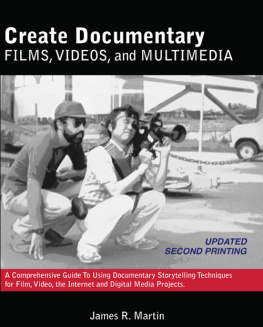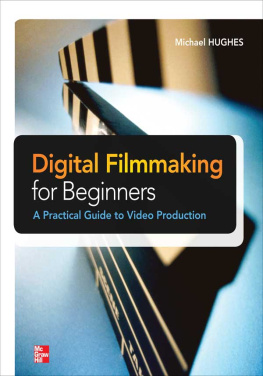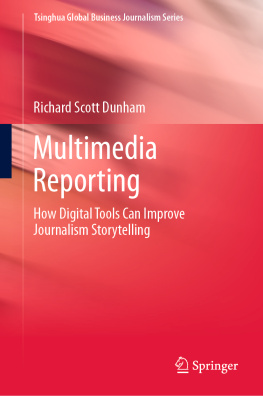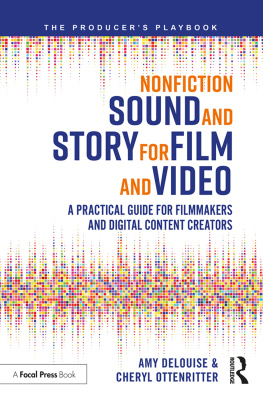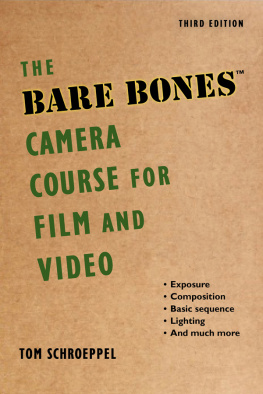
Video Journalism for the Web
As newspapers and broadcast news outlets direct more resources toward online content, print reporters and photojournalists are picking up video cameras and crafting new kinds of stories with their lenses. Creating multimedia video journalism requires more than simply adapting traditional broadcast techniques: it calls for a new way of thinking about how people engage with the news and with emerging media technologies. In this guide, Kurt Lancaster teaches students and professional journalists how to shoot better video and tell better stories on the web, providing a strong understanding of cinematic storytelling and documentary production so their videos will stand out from the crowd.
Video Journalism for the Web introduces students to all the basic skills and techniques of good video journalism and documentary storytelling, from shots and camera movements to sound and editingas well as offering tips for developing compelling, character-driven narratives and using social media to launch a successful career as a backpack journalist. Shooting, editing, and writing exercises throughout the book allow students to put these techniques into practice, and case studies and interviews with top documentary journalists provide real-world perspectives on a career in video journalism. This book gives aspiring documentary journalists the tools they need to get out in the field and start shooting unforgettable multimedia stories.
Kurt Lancaster is the author of DSLR Cinema: Crafting the Film Look with Video. He is an associate professor at Northern Arizona University where he teaches digital filmmaking and multimedia journalism in the School of Communication.
Video Journalism for the Web
A Practical Introduction to Documentary Storytelling
Kurt Lancaster
Northern Arizona University
First published 2013
by Routledge
711 Third Avenue, New York, NY 10017
Simultaneously published in the UK
by Routledge
2 Park Square, Milton Park, Abingdon, Oxon OX14 4RN
Routledge is an imprint of the Taylor & Francis Group, an informa business
2013 Taylor & Francis
The right of Kurt Lancaster to be identified as the author of this work has been asserted by him in accordance with sections 77 and 78 of the Copyright, Designs and Patents Act 1988.
All rights reserved. No part of this book may be reprinted or reproduced or utilized in any form or by any electronic, mechanical, or other means, now known or hereafter invented, including photocopying and recording, or in any information storage or retrieval system, without permission in writing from the publishers.
Trademark Notice: Product or corporate names may be trademarks or registered trademarks, and are used only for identification and explanation without intent to infringe.
Library of Congress Cataloging in Publication Data
Lancaster, Kurt, 1967.
Video journalism for the web: a practical introduction to documentary storytelling/by Kurt Lancaster.
p. cm.
Simultaneously published in the UK.
Includes index.
1. Documentary filmsProduction and direction. 2. Video journalism. 3. Online journalism. 4. Digital video. 5. JournalismAuthorship. 6. Reporters and reporting. 7. JournalismTechnological innovations. 8. JournalistsInterviews. I. Title. II. Title: Documentary storytelling.
PN1995.9.D6L365 2012
070.1dc23
2011051860
ISBN: 978-0-415-89266-7 (hbk)
ISBN: 978-0-415-89267-4 (pbk)
ISBN: 978-0-203-14575-3 (ebk)
Typeset in Aldine401 BT and Helvetica Neue by
Florence Production Ltd, Stoodleigh, Devon
For Stephanie Petrie, my guiding star
Contents
for Rhythm: Travis Foxs Redefining Chinas Family: Women
Figures
Foreword
This is the most exciting moment there has ever been for a storyteller. Both the production of and appetite for good stories is exploding.
Fueled by cheaper and more powerful tools, everyone has the ability to gather and distribute their stories now. Because of these changes, documentary journalists can have authorship and reach.
How stories are delivered is not as relevant as it was in the past. People will still watch TV, they will still read, but they will also consume stories on tablets, on their mobile phones, and on platforms that are only now emerging.
Even with all the change, the fundamentals of a great story remain and thats why this book is so useful.
Lancasters writing, interviews, and real-world examples will give you a great launch pad for advancing your work as a documentary journalist.
Storytelling skills have been honed and refined for years in traditional media. We need to bring forward and integrate the best of each disciplinethe ambient style of great radio together with the sophisticated compositions of still photography and the lyrical motion of documentary video.
Enjoy this book and your journey as a storyteller.
Brian Storm
Founder and Executive Producer, MediaStorm
http://mediastorm.com
Acknowledgments
I am grateful for the assistance of Northern Arizona Universitys Faculty Development grant that allowed me to research this project in the summer of 2009, covering my trips to Mexicali, Mexico, and New York City.
The following people opened up and shared their lives and experiences with me through interviews: Ann Derry of the New York Times , Jigar Mehta, formerly of the New York Times , Bill Gentile of American University, the Renaud Brothers, Jimmy Orr of the Los Angeles Times , Angela Morris, a freelance video journalist, Wes Pope, a veteran of photo- and multimedia journalism, John Yemma, the editor of the Christian Science Monitor , Ellen Spiro from the University of Texas, Austin, Brian Storm of mediastorm.com, multimedia storyteller Bob Sacha, and especially Travis Fox, formerly of the Washington Post , who allowed me to travel in the field and observe him working. Many of the examples from this book are drawn from his work.
My special thanks to Stephanie Petrie for traveling with me to Mexicaliher assistance was invaluable.
I wish to also thank my editor, Erica Wetter and her assistant Margo Irvin, who helped me shepherd this book along. Erica was instrumental in pushing me into restructuring the book into its current form, and I thank her for it.
My colleagues at Northern Arizona Universitys School of Communication, where I teach multimedia journalism and digital filmmaking, have all been supportive: Mark Neumann, Laura Camden, Peter Friederici, Mary Tolan, Marty Sommerness, Annette McGivney, Wes Pope, Kate Szrom, Rory Faust, Paul Helford, Norm Medoff, Charlie Hicks, Brandon Neuman, Dale Hoskins, Jon Torn, and Janna Jones.
COPYRIGHT
Images from The Recession-Proof Artist produced by Jigar Mehta and Class Dismissed in Swat Valley produced by Adam B. Ellick and Irfan Ashraf reproduced by permission of the New York Times . Copyright 2009.
Images from Redefining Chinas Family: Women (2007), Crisis in Darfur Expands: Testimonials (2007), and Narcocorridos and Nightlife in Mexicali (2009) all produced by Travis Fox reproduced by permission of the Washington Post . Copyright 2007, 2009.



